
Black Bear
(Ursus americanus):
Janet had the camera ready when this one decided to cross
the Dark Hollow Trail/SNP near Skyline Drive.

Beaver (Castor
canadensis): These little engineers are constantly
thinning the forest near streams, rivers and swamps. A
well-maintained dam seems to never burst. Location: C&O
Canal. Photo by Ken Clark.

Sitka Deer
(Odocoileus hemionus sitkensis): A native of Southeastern
Alaska and British Columbia. There are viable herds on
Assetuege Island and Black Water National Wildlife Refuge,
MD. We do not know how they got there. Much smaller than the
native White-tailed Deer. Photo by Saki.
|

White
Tailed Deer (Odocoileus virginianus): Common but spooky. You can only get this close
to them in Shenandoah National Park. Location: AT near Big
Meadows Campground.
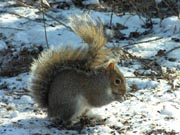
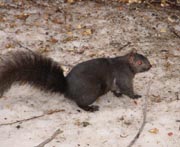
Eastern
Gray Squirrel (Sciurus carolinensis) - lower photo -
rare black coat: The common gray variety has a white belly and tan eye
rings. Some "rust" in the face, back and tail. The black form is seen mostly in urban areas. Photos
by Anita Mueller. |
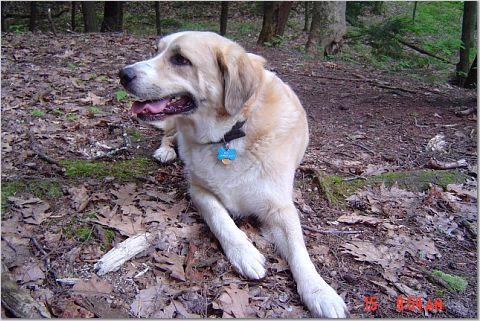
Sammy the
Wonder Dog: Very common and reliable. Shows up on almost
evey hike. Slowly becoming amphibious. Waiting for the day
when he shows up without Leena.
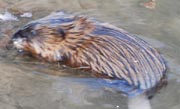
Common
Muskrat (Ondatra zibethicus): Lives in salt marshes,
fresh water ponds, canals and streams. Partially webbed hind
feet and vertically flattened tail makes it a good swimmer.
Burrows into the banks of waterways. Builds floating lodge
of cattails, roots and mud. Feeds primarily on aquatic
vegetation. Photo by Anita Mueller.
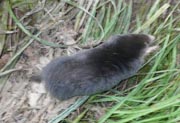
Eastern
Mole (Scalopus aquaticus): Bores tunnels under the
soils surface, feeding on worms and grubs. Location: Upper
Red Creek Tr, Dolly Sods North, WV. Photo by Craig Ross.
|
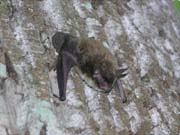
Little
Brown Bat (Myotis lucifugus): Location - Long Pond Tr, GRSF, MD. Photo by Ken
Clark.
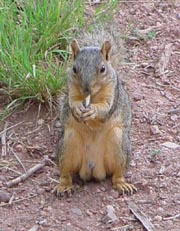
Eastern Fox
Squirrel (Sciurus niger): Much larger than the
Eastern Gray Squirrel. Red chest, stomach, inner legs and
edges of the tail. Delmarva race is more gray and white.
Rare throughout the region. Photo by Anita Mueller. |
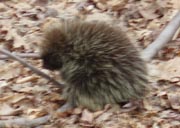
Porcupine (Erethizon
dorsatum): Mainly nocturnal. Location: Fowler Hollow
SP, PA.
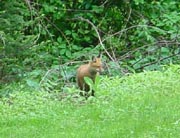
Red Fox (Vulpes
vulpes): Indigenous and introduced stock now interbred.
Red with black legs. Ears pointed and black. Throat white.
Eats rodents, squirrels and rabbits as well as insects,
berries and fruit. Dens are usually empty burrows from other
animals. Nocturnal. Photo by Anita Muellar. |

